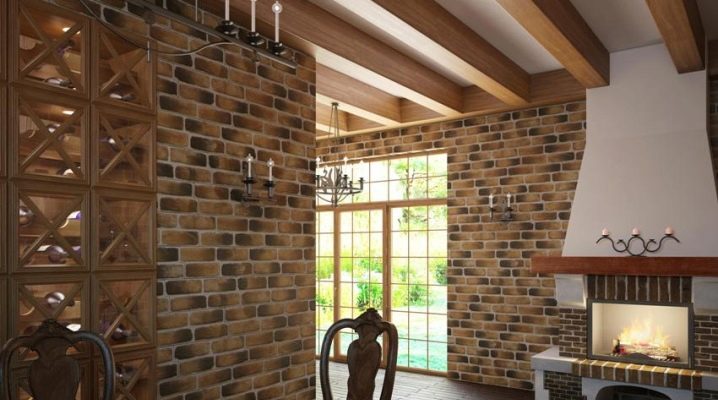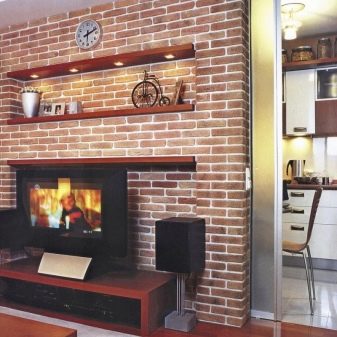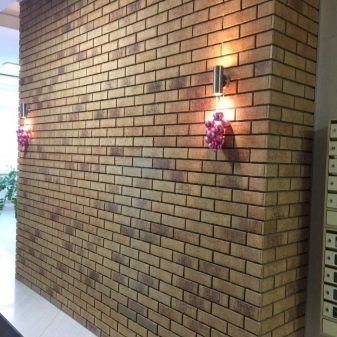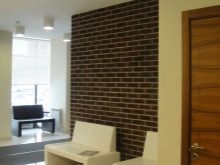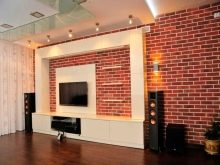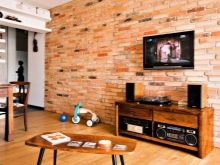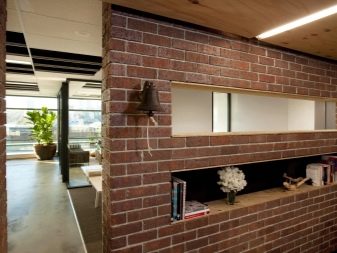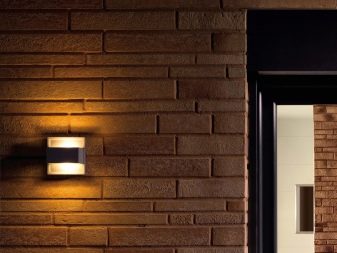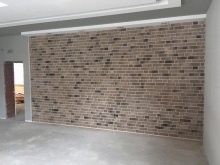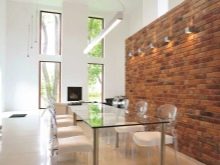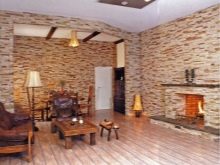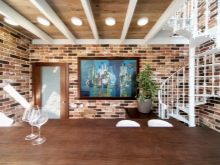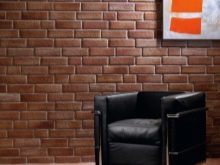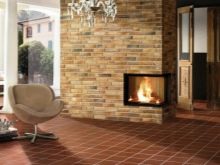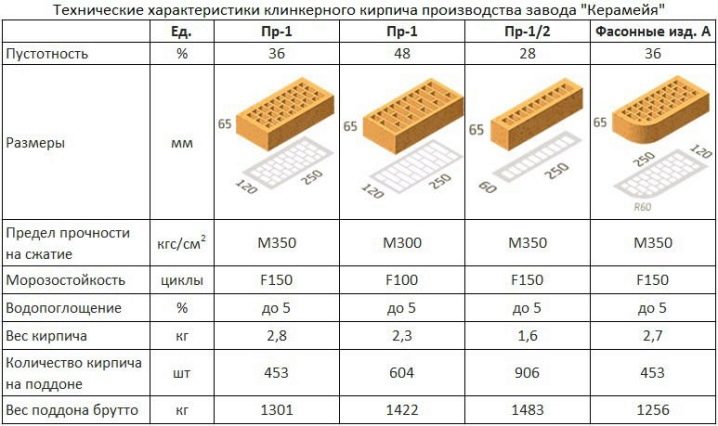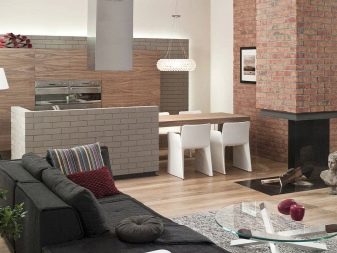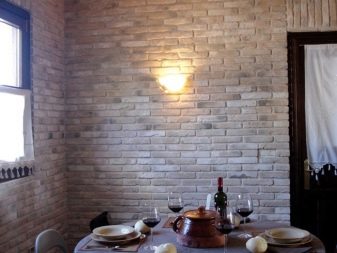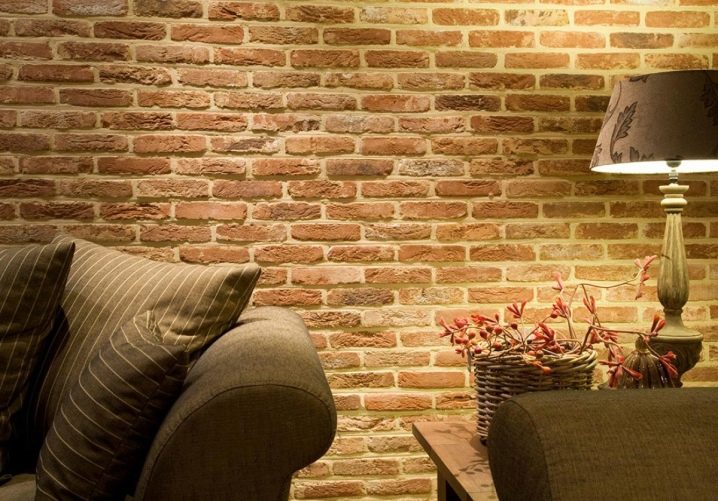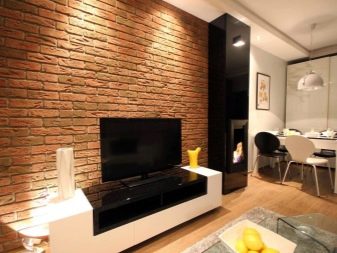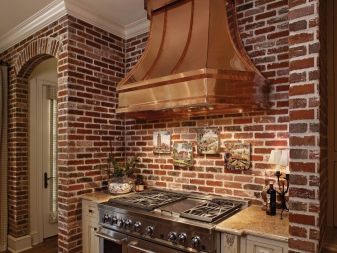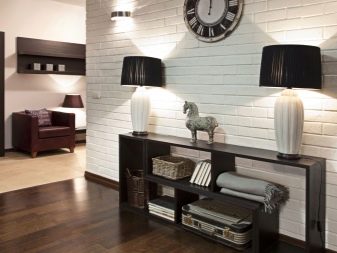Features and use of clinker brick for interior decoration
The term "clinker brick" appeared on the ear relatively recently, although it has been used in construction practice for more than two centuries. What is this material and where is it used? We will tell about it in the article.
Properties and specifications
The historical homeland of this material is considered to be the Netherlands. For the production of clinker bricks pick up a special clay. After processing, it becomes harder than natural stone. This material began its movement around the world from the territory of Europe at the end of the last century and reached our country. The use of clinker is wide. They lay out the garden paths on the garden plots, carry out with it the interior walls and more.
To produce products with different colors using natural dyes.that pose no threat to human health.
Manufacturers of this product guarantee that such a brick will last more than a dozen years without loss of operational properties.
In the construction market there are several versions of clinker bricks, they differ from each other in the type of surface. It can be smooth or rough.
Firing, through which the clinker brick passes, ensures its durability and quality.
This building material has the following properties:
- long service life;
- high resistance to mold and mildew;
- the ability to withstand changes in temperature and ultraviolet radiation;
- easy cleaning and maintenance.
In order to accelerate the work and reduce their labor intensity, the construction industry enterprises have mastered the production of panels from clinker. This allows you to perform work at high speed. The panels are distinguished by relatively low cost and high durability. It should be noted that in addition to the obvious advantages, the clinker brick has some drawbacks, in particular, the complexity of production.
By the way, its installation requires a professional approach and special skills.
Where and how to use clinker brick
The use of bricks when facing allows you to create optimal microclimatic conditions in the room.
Clinker bricks, often used by designers for the design of premises. With it, perform imitation masonry, made of ordinary bricks. In particular, it is often used for decoration of corners, fireplaces, arches.
Aged brick allows designers to implement the most fantastic ideas. It is often used to delimit the space into specific zones. White clinker brick lay for the visual expansion of space. It looks very good in conjunction with a coating made of wood or metal.
By the way, interior design experts recommend using materials of light tones.
Features masonry for interior decoration
Before you start laying bricks of this class on the wall, you need to make and fix a crate of wooden bars or a special metal profile on it, lay engineering communications and only after that you can start the work itself.
To fix it on the basis of applied cement raster or a special adhesive.
Of course, before installing the crate, you will need to make sure that the wall is level, if necessary, you will have to make preparatory repair work.
Size range of clinker bricks
Products of this type are produced by a large number of enterprises both in our country and beyond its borders. Anyway, all manufacturers adhere to certain standard sizes. The size of the brick can be found in its name.
- NF - single stone, with dimensions of 250 * 120 * 65 mm.
- There are 1.4 NF - this is a one-and-a-half stone, with parameters 250 * 120 * 88 mm.
- In addition to these samples, there is a double stone 250 * 120 * 140 mm (2.1 NF).
In addition to these sizes, manufacturers produce the so-called European brick, it is marked NF 0.7 and NF 1.3. It has corresponding sizes of 250 * 85 * 65 and 288 * 138 * 65 mm.
In accordance with the requirements of regulatory documents, the clinker brick should be in the form of a parallelepiped, the maximum deviation of the size of the length should not exceed 4 mm.
Clinker Design Solutions
The appearance of clinker allows you to make original design solutions in the interior decoration of the room.Four styles are extremely popular among consumers.
"Loft"
This style originated in the first half of the last century, and it was then that the bohemians began using studios, abandoned buildings, attics, and other rooms for housing. As a rule, in such dwellings the walls were laid out of brick and not processed. Clinker brick allows you to imitate the old masonry. This style is characterized by the fact that the brick seems to be aged.
"Country"
This direction implies that the room will be decorated in the style of a village house. In our century, a style called "Ethno - Country" has appeared. Rooms are made in the traditions of different nations. This design of the walls involves the use of a brown tone.
"High tech"
Such a word is called avant-garde style, which can combine incompatible things. This option is characterized by straight lines, simplicity and the presence of metal. When finishing the room in this direction - apply concrete, glass, metal. The main color for such rooms is white. Accordingly, clinker is also coated in white.
"English style"
Such a design recreates the atmosphere of good old England of the late XIX century.When decorating a room in this style, panels of wood, ceramic tiles, wallpapers and, of course, clinker are used.
If we are talking about specific projects, then this decorative material is used:
- for decorating fireplaces that are installed in country houses;
- the design of a kitchen apron or display columns, which will be installed countertop;
- decorating the walls of the bedroom or living room, so tiles can be in harmony with the ceiling covering, made of modern materials.
You will learn more about clinker bricks from the following video.
